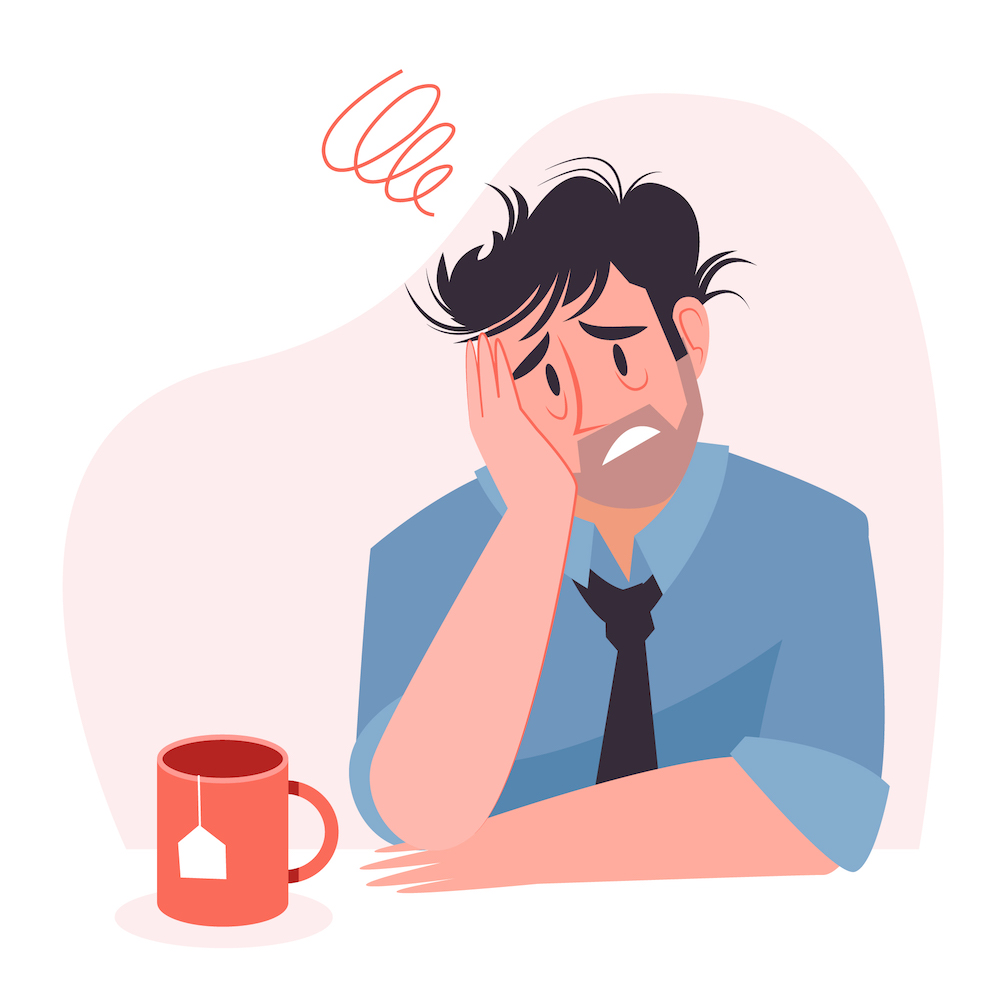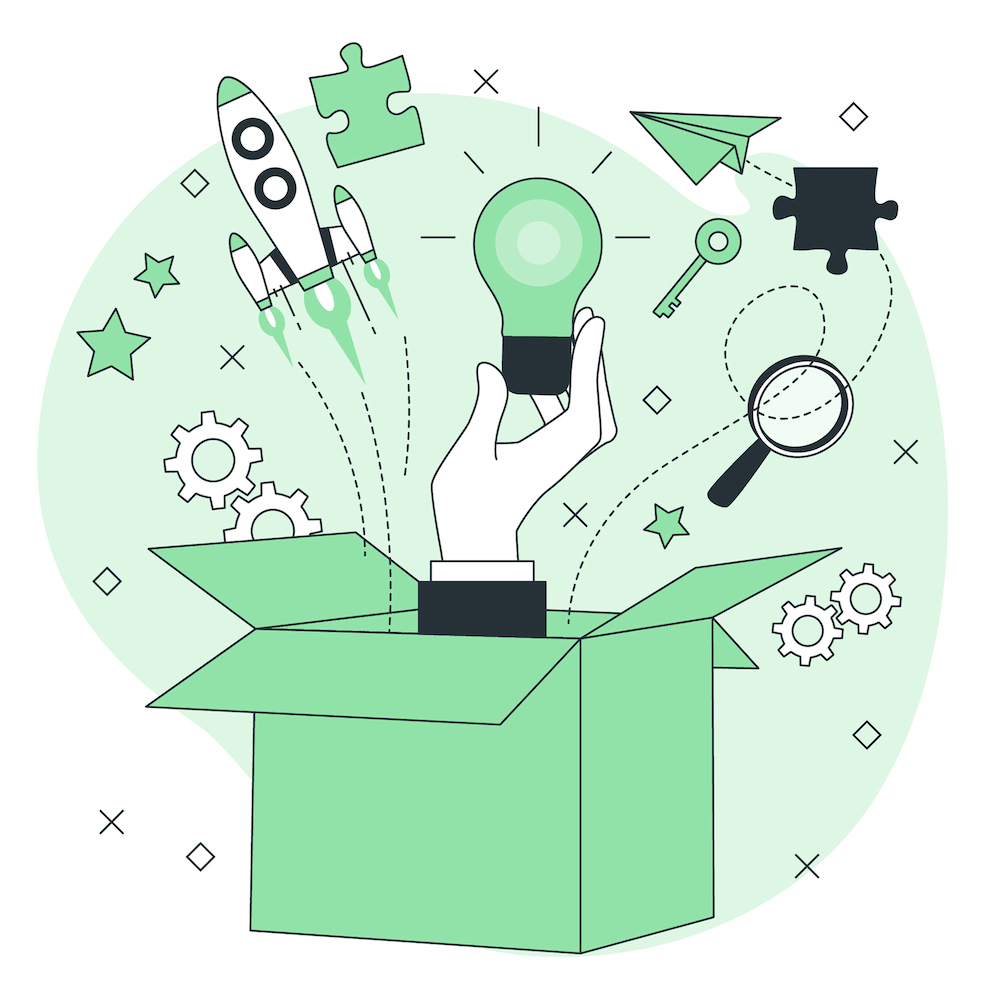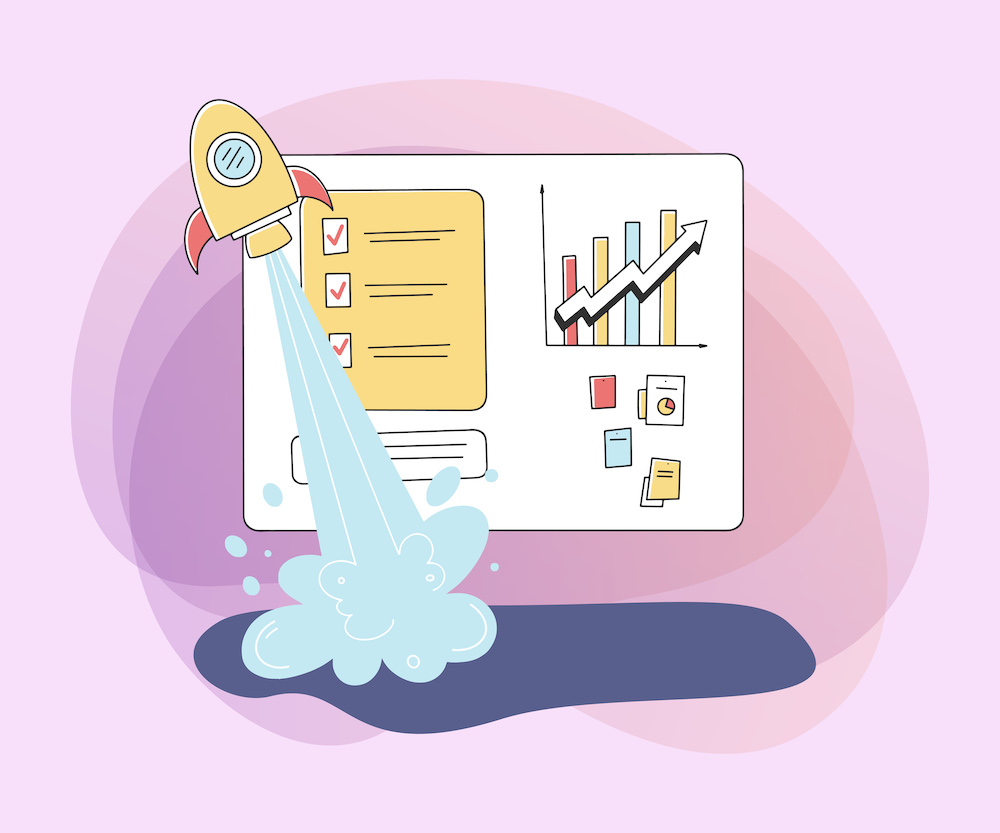This article delves into effective strategies for identifying the root causes of customer dissatisfaction, examining the ripple effect it has on your business and presenting proven methods for improvement
Customer dissatisfaction can significantly impact your company's reputation and bottom line. It's a complex issue, influenced by various factors such as product quality, customer service, and unmet customer expectations. Understanding and addressing the root causes of client complaints not only helps in retaining unhappy customers but also boosts your brand's perception and customer loyalty in the long run. Recognizing the early signs of customer complaining and effectively managing customer service complaints can turn potentially negative experiences into positive outcomes.
This article delves into effective strategies for identifying the root causes of customer dissatisfaction, examining the ripple effect it has on your business and presenting proven methods for improvement. From leveraging customer feedback through surveys and addressing customer service complaints to investing in customer service improvement and ensuring clear communication, you will discover how to transform complaining customers into satisfied patrons. Personalization strategies and a commitment to exceptional customer support play pivotal roles in preempting customer dissatisfaction, ensuring that your business not only meets but exceeds customer expectations.
Identifying the Root Causes of Customer Dissatisfaction
Identifying the root causes of customer dissatisfaction is crucial for any business aiming to improve its customer service and product quality. By understanding where the gaps lie, you can take targeted actions to enhance the overall customer experience. Here are some of the primary factors contributing to customer dissatisfaction:
Poor Customer Service
Customer service is often the frontline of your business's interaction with customers. When service falls short, it can leave a lasting negative impression. Common issues include unresponsive, unhelpful, or rude representatives, which can erode customer satisfaction rapidly. Inadequate training, slow response times, and a lack of empathy are typical pitfalls that need addressing. Ensuring your customer service team is well-trained, empathetic, and responsive will help in retaining customer loyalty and preventing dissatisfaction.
Product Quality Issues
The quality of your products plays a significant role in meeting customer expectations. If a product fails to perform as advertised or breaks down easily, it can lead to frustration and disappointment. Ensuring that your products meet quality standards and are durable is essential. Regular quality checks and listening to customer feedback about product performance can help identify issues early before they affect more customers.
Mismatch Between Expectations and Experience
A significant gap often exists between what customers expect and what they experience. This gap can stem from several sources, such as misleading advertising, unclear product descriptions, or simply not delivering on your brand promise. It's crucial to set realistic expectations through clear and honest communication. Make sure that your marketing materials, product descriptions, and customer communications accurately reflect what you offer. Additionally, keeping an eye on competitor offerings and ensuring you remain competitive can help manage customer expectations effectively.
By addressing these key areas, you can significantly reduce customer dissatisfaction and turn potential negative experiences into positive ones. Engaging with customers, understanding their needs, and continuously improving based on their feedback are essential steps in this ongoing process.
The Impact of Customer Dissatisfaction on Your Business
Customer dissatisfaction can have profound and far-reaching effects on your business, impacting everything from your bottom line to your brand's public perception. Understanding these impacts is crucial for developing effective strategies to address and mitigate potential damages.
Loss of Repeat Business
When customers are dissatisfied, their likelihood of returning for additional purchases diminishes significantly. This reduction in customer loyalty directly affects your sales and, ultimately, your profits. For instance, studies have shown that dissatisfied customers are quick to switch brands if their expectations are not met, particularly in competitive markets where alternatives are readily available. This loss of repeat business not only impacts revenue but also increases the cost of acquiring new customers, which is typically higher than retaining existing ones.
Negative Word of Mouth
In today’s digital age, customers have powerful platforms at their fingertips to voice their dissatisfaction. A single negative review or an angry tweet can escalate quickly, influencing potential customers’ perceptions of your brand. Negative word-of-mouth spreads rapidly and can significantly harm your company’s reputation and credibility. For example, a study from the University of New Orleans revealed that negative reviews could decrease participants' perceived brand value, particularly impacting smaller, less-established brands more severely.
Damage to Brand Reputation
The cumulative effect of negative experiences and customer feedback can severely tarnish your brand's reputation. This damage is amplified by the speed and reach of online communication channels. A tarnished reputation makes it challenging to attract new customers and can stifle growth opportunities. Protecting and enhancing your brand reputation by addressing customer complaints swiftly and effectively is vital for maintaining a positive image and securing your market position.
By addressing these critical areas of concern, you can mitigate the negative impacts of customer dissatisfaction and position your business for long-term success. Engaging actively with customers and refining your service offerings based on their feedback are essential steps in this ongoing process.
Strategies for Addressing and Preventing Customer Dissatisfaction
Adopt a Customer-First Mindset
Adopting a customer-first mindset is crucial in addressing and preventing customer dissatisfaction. This approach involves putting the customer at the center of your business decisions and ensuring that their needs and expectations are prioritized. By focusing on the customer, you can better understand their pain points and work towards solutions that enhance their overall experience. Training all employees, not just customer-facing ones, to adopt this mindset ensures that every aspect of your business contributes to a positive customer experience. Regular feedback loops with customers can also provide invaluable insights into their needs and how they perceive your services, allowing for continuous improvement.
Set Clear Expectations
Setting clear and realistic expectations is fundamental in preventing customer dissatisfaction. Misunderstandings often occur when there is a gap between what customers expect and what they actually receive. To avoid this, ensure that all communications, from marketing materials to individual customer interactions, are clear and honest. Explain product features, limitations, and all terms of service transparently to avoid potential misunderstandings. Additionally, managing expectations isn’t just about clarifying what customers should expect, but also involves regular updates and communications throughout the customer journey, especially when adjustments are needed.
Improving Product Quality and Service
Enhancing the quality of your products and services is a direct way to reduce customer dissatisfaction. Regularly assess and improve your offerings to ensure they meet or exceed customer expectations. Implement rigorous quality control checks and consider customer feedback to make necessary adjustments. Moreover, providing exceptional customer service can significantly enhance customer satisfaction levels. Invest in training your staff to handle inquiries and complaints efficiently and empathetically. Ensure they have the necessary tools and authority to solve customer problems promptly, which can often turn a potentially negative experience into a positive one.
By integrating these strategies into your business practices, you can significantly improve how you address and prevent customer dissatisfaction, ultimately leading to higher customer retention and loyalty.
Leveraging Customer Feedback for Continuous Improvement
Implementing Feedback Loops
Implementing feedback loops is a dynamic strategy to enhance your product and service offerings continuously. A customer feedback loop involves collecting feedback through various channels such as online review platforms, social media, and direct customer interactions. Once collected, it's crucial to analyze this feedback to identify patterns and common issues. This analysis allows you to address these issues proactively and feed valuable insights directly to your product and service development teams. By closing the loop, you inform your customers about the changes you've made, demonstrating that their input has directly influenced improvements. This not only enhances customer satisfaction but also encourages ongoing engagement.
Customer Satisfaction Surveys
Customer satisfaction surveys are instrumental in gauging how your customers feel about your business and services. They provide critical data that helps you understand what's working well and what areas require enhancement. Surveys should include questions that cover various aspects of your business, from customer support to product quality and overall experience. By consistently running these surveys, you can track changes over time and measure the effectiveness of the new strategies you implement. Remember, the key to successful surveys is not just collecting data but acting on it to make informed decisions that drive continuous improvement.
Real-Time Resolution of Issues
Addressing customer issues in real-time can significantly boost satisfaction and loyalty. Monitoring metrics like Time to Resolution (TTR) helps you understand how quickly you are resolving customer issues and how this affects their overall experience. A shorter TTR generally increases customer satisfaction, as it reflects your commitment to resolving their concerns promptly. Enhance your customer support processes by implementing advanced tools like AI-driven solutions and chatbots, which can help speed up response times. Additionally, empowering customers with self-help resources and clear, effective communication can prevent many issues from escalating, ensuring a smoother experience for both your team and your customers.
By leveraging customer feedback effectively, you can create a more responsive and customer-centric business. This continuous loop of feedback and improvement not only meets but often exceeds customer expectations, fostering a loyal customer base and driving your business forward.
Personalization and Clear Communication
Personalization and clear communication are pivotal in enhancing customer satisfaction and loyalty. By tailoring interactions to individual needs and maintaining transparency in marketing and sales messaging, you can foster a deeper connection with your customers. This section explores effective strategies to achieve these goals.
Tailoring Interactions to Individual Needs
To effectively personalize customer interactions, it's essential to balance technology with human insight. Utilizing data to anticipate customer needs can transform a standard service into an exceptional experience. For instance, integrating your messaging channels with other support systems allows customer service agents to access comprehensive customer histories. This integration enables them to offer support that is not only timely but also contextually relevant.
Personalization should also extend across all communication channels. Whether it's through email, live chat, or phone, addressing customers by name and tailoring the communication to their previous interactions with your brand can significantly enhance their experience. This approach not only makes customers feel valued but also increases the likelihood of them becoming repeat, loyal patrons.
Moreover, ensure that the personalization strategy is genuinely useful to the customer. Offers and messages should provide real value, distinguishing genuine personalization from mere marketing noise.
Transparency in Marketing and Sales Messaging
Transparency is the foundation of trust between your brand and your customers. It involves being open about your company's practices, goals, values, and even challenges. Here are three critical elements of brand transparency:
- Corporate Practice: Clearly communicate your brand's policies and performance. This openness should cover everything from your operational strategies to your environmental impact.
- Product Proof: Provide customers with tangible proof of what they are buying. This includes detailed information about the materials used, the manufacturing process, and the product's lifecycle.
- Brand Purpose: Share your brand's values and beliefs consistently across all platforms. This alignment reassures customers that they are investing in a brand that matches their values.
Implementing transparency not only helps in building trust but also gives you a competitive edge. Consumers appreciate brands that do not hide important information, especially in today's digital age where information is readily sought and shared online. Transparency leads to informed customer decisions, fostering loyalty and advocacy for your brand.
By prioritizing honesty in your communications and ensuring consistency across all channels, you can effectively integrate transparency into your marketing strategy. This approach not only builds stronger relationships but also enhances customer loyalty and trust over time.
Investing in Exceptional Customer Service
Investing in exceptional customer service is pivotal for any business aiming to enhance customer satisfaction and loyalty. This section explores two critical areas: Training and Empowerment of Support Staff, and Implementing Effective Customer Support Tools, which are essential for elevating the quality of service provided to customers.
Training and Empowerment of Support Staff
Training and empowering your customer service staff are fundamental to providing top-notch service. Empowered employees with the right tools and knowledge are more likely to handle customer inquiries effectively and contribute positively to the customer's experience. Here are several strategies to enhance your support staff's capabilities:
- Regular Training and Updates: Keep your customer service team updated with regular training sessions on product changes, customer handling skills, and company policies. This ensures they are well-equipped to handle all types of customer inquiries.
- Empowerment Through Tools: Provide your agents with the necessary tools to improve their job performance. This includes access to comprehensive dashboards that compile data from various stages of the customer journey, allowing them to make informed decisions quickly.
- Feedback and Coaching: Utilize interaction transcriptions as a coaching tool. Provide actionable feedback on specific interactions, which helps agents understand and improve their communication skills, directly enhancing customer satisfaction.
- Career Development: Invest in development programs that not only focus on immediate job skills but also provide growth opportunities within the company. This fosters a sense of value and loyalty among staff.
Implementing Effective Customer Support Tools
The right tools can dramatically improve the efficiency and effectiveness of your customer service operations. Implementing state-of-the-art customer support tools ensures that your team can deliver consistent and high-quality service. Consider these key tools:
- Online Survey Platforms: Services like SurveyOcean offer user-friendly interfaces for creating, distributing, and analyzing surveys. These platforms often provide robust reporting and analysis features, making it easier to derive actionable insights from customer feedback.
- Customer Relationship Management (CRM) Systems: These systems help organize and manage customer information, making it easy for service agents to track interactions and understand customer needs better.
- Live Chat and AI-driven Tools: Incorporate live chat options and AI-driven tools like chatbots to provide instant responses to customer inquiries. This not only enhances efficiency but also improves customer satisfaction by reducing wait times.
- Knowledge Base Software: Develop a comprehensive repository of information that can be easily accessed by both customers and support staff. This empowers customers to find solutions independently and reduces the workload on your service team.
- Ticketing Systems: Implement structured ticketing systems to organize and prioritize customer issues. This ensures that all customer concerns are addressed in a timely and systematic manner.
By focusing on these areas, you can ensure that your customer service team is not only well-prepared but also well-equipped to handle and exceed customer expectations, leading to improved customer loyalty and reduced dissatisfaction.
Conclusion
In summary, effectively addressing and preventing customer dissatisfaction stands as a pivotal element for fostering sustained business growth and enhancing the overall customer experience. Strategies such as adopting a customer-first mindset, setting clear expectations, improving product quality and service, and leveraging customer feedback for continuous improvement have been discussed as essential practices. These approaches not only help in retaining unhappy customers but also in transforming customer service challenges into opportunities for brand loyalty and positive perception, underscoring the vital role of understanding and acting on customer feedback across various touchpoints of the business.
As we navigate the complexities of customer satisfaction, it becomes clear that investment in quality customer service and the implementation of robust feedback mechanisms are indispensable. By personalizing interactions and ensuring transparency in communications, businesses can build deeper relationships with their customers, setting the stage for long-term success. The journey towards achieving and maintaining customer satisfaction is continual, urging businesses to stay responsive and adaptable to evolving customer expectations. Thus, the focus on enhancing customer satisfaction through thoughtful, customer-centric strategies not only benefits the customer but also contributes significantly to the health and reputation of the brand.
FAQs
What are effective strategies to prevent customer dissatisfaction?
To prevent customer dissatisfaction, it is crucial to set clear and realistic expectations right from the start. Ensuring transparency across all customer interactions can significantly reduce the chances of unmet expectations, which are often a primary source of dissatisfaction. Incorporating this strategy throughout your organization is essential for maintaining a positive relationship with your customers.
How can businesses proactively avoid customer dissatisfaction?
Avoiding customer dissatisfaction involves several proactive steps:
- Always be proactive rather than reactive to potential issues.
- Respond promptly to any concerns or problems that arise to resolve them as quickly as possible.
- Maintain honesty with your customers, as truthfulness is generally more appreciated than deceit.
- Evaluate the cost-benefit ratio of each sale, acknowledging that not all sales may be worth pursuing if they lead to significant dissatisfaction.
What steps should be taken to effectively address customer dissatisfaction?
When faced with customer dissatisfaction, follow these steps to manage and resolve complaints effectively:
- Listen carefully to the customer's concerns.
- Show empathy towards their situation.
- Offer a sincere apology.
- Ask detailed questions to fully understand the issue.
- Involve any necessary parties to help find a solution.
- Aim to resolve the issue swiftly.
- Follow up with the customer to ensure their satisfaction.
- Document the complaint and resolution process for future reference.
How can customer dissatisfaction be improved?
Improving customer dissatisfaction involves acknowledging and acting upon customer feedback, especially regarding product usability. Providing customers with additional resources to enhance their product experience, apologizing for any shortcomings, and expressing that their feedback is valuable are key steps. Letting customers know that their reviews can lead to product improvements reinforces the value of their input and can turn dissatisfaction into a constructive outcome.
Create Survey Now













